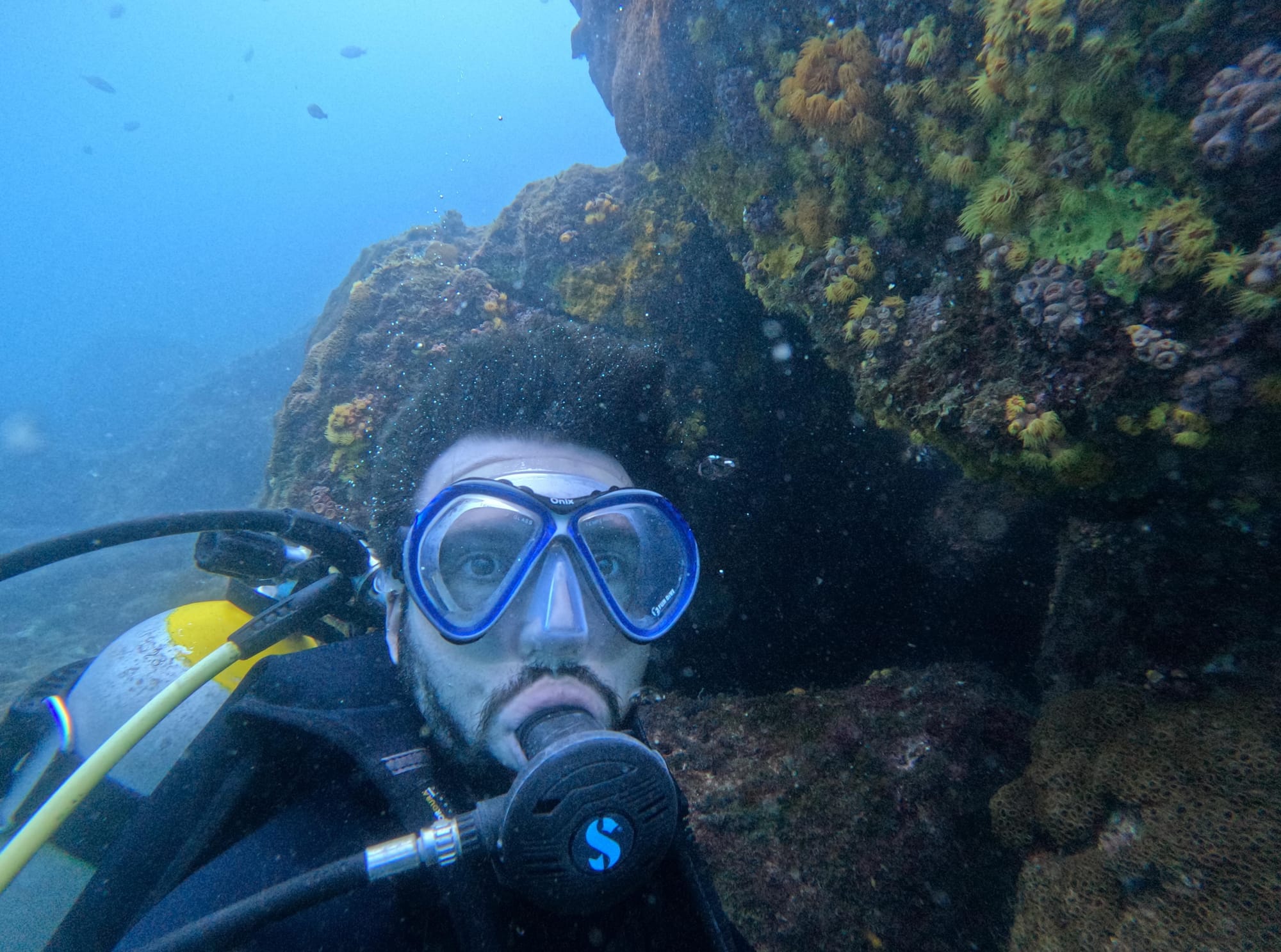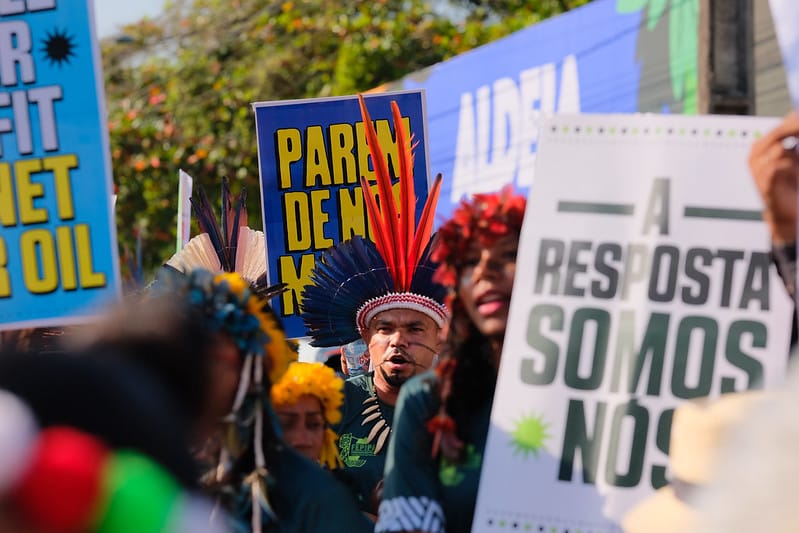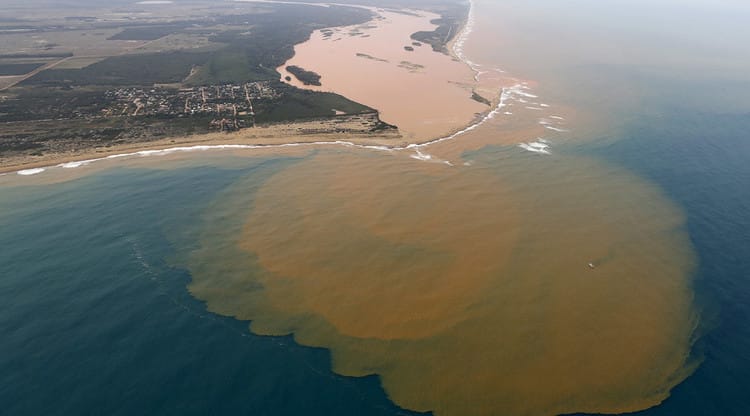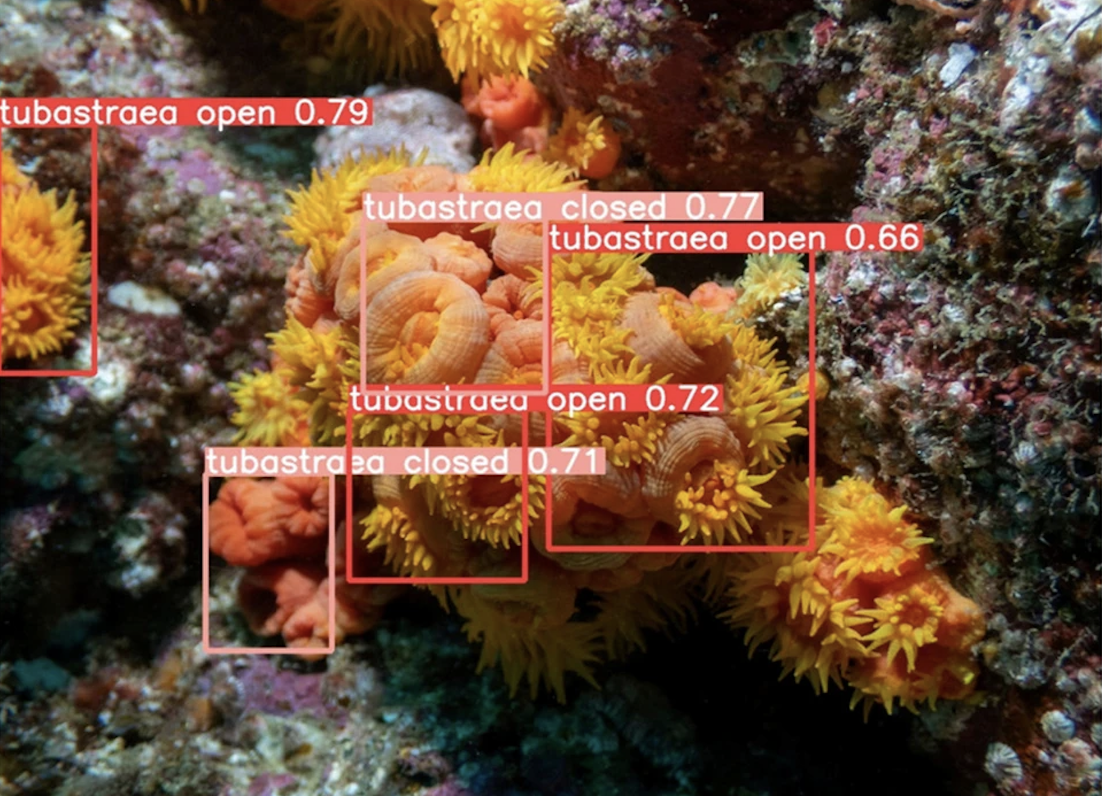Sun coral: understand the problem caused by an invasive species on the Brazilian coast
The spread of sun coral reinforces the importance of seeking preventive solutions and strengthening the 30x30 goal to make natural environments more resilient

Sun Coral, an Invasive Species
The crystal-clear sea of Arraial do Cabo—a marine sanctuary in the state of Rio de Janeiro (RJ)—presents a potential biodiversity threat. Sun coral, an invasive species native to the Indian and Pacific Oceans, has found ideal conditions for growth on the Brazilian coast. Diver Maria Romana, who has been working in the region for two years, described the situation:
"Man, there's a lot, a lot, a lot. It's infested with sun coral here. It's a plague. It came with the ships and is super dense. In places I've dived, like São Paulo, Angra dos Reis, and Paraty, there's even a community effort to remove it," she reported.
Sun coral has an appearance reminiscent of the sun itself, as its name suggests, but it also bears a resemblance to a sunflower. The problem is that, despite its beauty when diving, its presence in an environment where it isn't native competes with local species for its monopolistic status.
"Despite its beauty down there—even at night, it's wonderful [because it reflects light]—it's a predator. It dominates wherever it goes," the diver added.
First record of sun coral in Brazil and its causes
A specialist in Marine Ecology, professor and researcher Carlos Eduardo Leite Ferreira, known as "Cadu," stated that the first records of sun coral in Brazil were in the 1980s, in the Campos Basin.
"From there, the species spread throughout the South, Southeast, and is now arriving in the Northeast," he said.
The researcher explained that the species' settlement occurred primarily in the Campos Basin, a point of intense offshore activity, where oil platforms received maintenance and materials from different parts of the world. This movement facilitated the transport of species encrusted on hulls and submerged structures.
Over time, sun coral expanded its distribution. The professor noted that it began in subtropical environments and is now expanding into tropical areas, which requires constant scientific monitoring.
"Now it's heading to the tropics, so we'll see the next chapters there in the tropics. What will it be like?" he asked, indicating that it's still unclear what the future holds.
Competition and adaptation: why is sun coral a problem?
Researcher Ana Carolina Luz, a biologist responsible for research related to sun coral in Arraial do Cabo, explained to Correio Sabiá why the species is considered a threat to biodiversity:
"Sun coral is an invasive species. The main problem it causes is competition for space and food with native species on our Brazilian coast."
According to her, the species is highly adaptable to different biomes. It can withstand variations in temperature and salinity, and it also has a high reproductive capacity.
"Sun coral has excellent reproductive and adaptive capabilities compared to some other, more sensitive species. It feeds on plankton and microorganisms and ends up monopolizing an entire coastline," he stated.
This behavior causes sun coral to quickly establish itself in diving areas and conservation units, such as MPAs (Marine Protected Areas), posing a challenge for both scientific research and environmental management.
The transformation of biodiversity on the seabed may go unnoticed by casual visitors, but for those who closely observe the environment, the change is clear. In just a few years, areas previously occupied by native corals began to display extensive colonies of sun coral.
"There were places where we saw the entire rock already taken over. There's no space for other corals to coexist in harmony," stated diver Maria Romano.
Correio Sabiá conducts scuba diving in Arraial
To witness the presence of sun coral in the region, Correio Sabiá reporters conducted scuba diving in Arraial do Cabo. We observed its presence in different spots, often dominating the entire rocky coastline.
During the expedition, we recorded underwater footage with a GoPro 11 Black Edition. Some of the footage illustrates our documentary on the presence of sun coral on the Brazilian coast.
The underwater videos we shot were also used in a computational model that uses machine learning to identify sun coral locations.
The model was developed by researcher Ana Carolina Luz and will be detailed later in this series of reports. It is a potential solution for reducing risks caused by invasive species and working on prevention.
Impacts on protected areas
For researchers, monitoring the expansion of sun coral is essential. The process of dominance compromises habitats, affects food chains, and reduces diversity in critical areas. These impacts also occur in protected areas.
"Here in Arraial do Cabo, we've already suffered from this situation. We have sun coral colonies in protected areas and extractive reserves," said Ana Carolina Luz.
The coexistence of tourism and conservation makes the region a microcosm of the national challenge. In the past, the problem seemed restricted to isolated areas. Today, the situation is broader. This constant advance makes vigilance essential, as new environments may be at risk.
"We need to monitor [how the sun coral advances] over time," said Cadu.
Alignment with the 30x30 Goal
The global 30x30 goal, established to protect 30% of terrestrial and marine areas by 2030, is essential to mitigate ecological risks such as the invasion of sun coral on the Brazilian coast.
By ensuring the creation and strengthening of MPAs (Marine Protected Areas), 30x30 expands the institutional and financial conditions to monitor ecosystems and respond quickly to biological threats.
In the case of sun coral, whose accelerated reproduction and adaptability challenge ecological balance, the effective implementation of these goals would allow for more coordinated preventive actions, based on scientific data and integrated conservation policies.
The presence of sun coral in conservation units demonstrates how, in addition to the existence of protected areas, active management, continuous surveillance, and collaboration between researchers, divers, and coastal communities are necessary.
The 30x30 goals expand the debate on marine conservation and encourage the protection of territories and the development of management strategies that maintain the resilience of ecosystems against invasive species.
Support from the Earth Journalism Network
The series of reports “Sun Coral, an Invasive Species on the Brazilian Coast” is a production by Correio Sabiá and Ocean with support from the Earth Journalism Network.
This is because the founder of Correio Sabiá and Ocean, journalist Maurício Ferro, was one of the 16 selected in a global call by the Earth Journalism Network, being the only Brazilian in the group.
Throughout these days, readers will find information about this invasive species in bilingual versions (Portuguese and English). There will also be an audiovisual production to be released on the Correio Sabiá YouTube channel.
Autor

Jornalista e empreendedor. Criador/CEO do Correio Sabiá. Emerging Media Leader (2020) pelo ICFJ. Cobriu a Presidência da República.
Inscreva-se nas newsletters do Correio Sabiá.
Mantenha-se atualizado com nossa coleção selecionada das principais matérias.



